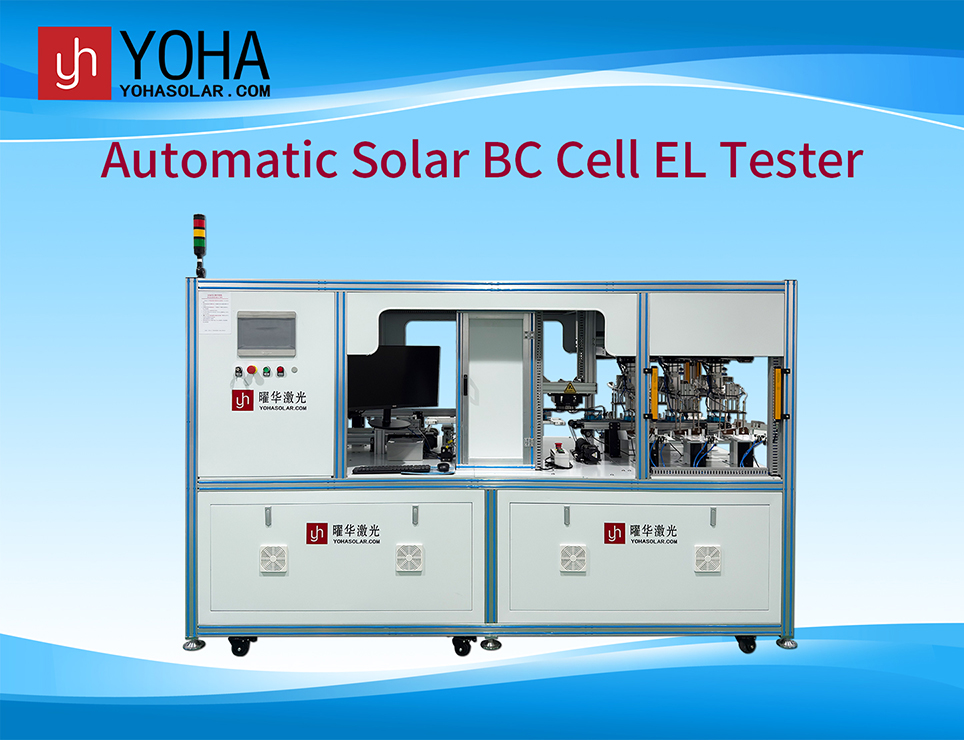Welcome to Wuhan Yoha Solar Technology Co., Ltd!
common problem
Site Map
Language:
 Chinese
Chinese
 English
English
Welcome to Wuhan Yoha Solar Technology Co., Ltd!
common problem
Site Map
Language:
 Chinese
Chinese
 English
English
In today's PV industry, which is advancing towards "grid parity" and high efficiency, the creation of each PV module is not merely the simple sum of materials and processes, but a stringent test of precision, reliability, and lifespan. In this test, PV inspection equipment manufacturers play the crucial role of "gatekeepers." They do not directly produce a single cell nor build a single power plant, yet the technology and equipment they provide form the indispensable "lifeline" for the high-quality development of the entire PV industry. Understanding the value of these manufacturers is to grasp the underlying logic of the industry's steady progress.
I. Beyond "Inspection": From Manufacturing's Back End to Full-Process Quality Enablement
Traditionally, inspection was often seen as the final step in the production process, aimed at "screening out defective products." However, the precision and complexity of modern PV manufacturing have fundamentally changed this perception. The value of excellent PV inspection equipment manufacturers now permeates the entire lifecycle, from R&D and production to verification and even power plant operation and maintenance.

On the R&D Front: Inspection equipment is the sole benchmark for verifying the performance of new materials, new processes, and new structures. Whether it's evaluating the efficiency gains of novel passivated contact technologies or assessing the stability of perovskite tandem cells, precise inspection equipment is needed to provide objective, accurate data support. Without this data, technological iteration would be like "the blind men touching an elephant," fraught with difficulty.
On the Production Front: Inspection equipment is the core of achieving intelligent and digital manufacturing. In-line inspection systems are seamlessly integrated into production lines, monitoring each cell and every encapsulation process step in real-time. This is no longer just final checking, but in-process intervention, capable of instantly detecting process deviations and guiding adjustments to production parameters, thereby reducing the defect rate at the source and improving product consistency and yield.
At the Final Inspection and Certification Stage: Inspection equipment provides the "authoritative endorsement" of product performance and reliability. By simulating harsh outdoor conditions – such as damp heat, UV exposure, thermal cycling, and mechanical load testing – over 25 or even 30 years, they accelerate the validation of a module's long-term power generation capability and durability. This "health report," built on precise inspection data, is key for module manufacturers to win customer trust and gain access to international markets.
Therefore, top-tier PV inspection equipment manufacturers essentially provide PV companies with a "quality management system and solution" covering the entire process. They are core enablers for the PV industry's move towards high-end manufacturing and value leap.
II. The Technology-Driven Core: The Leap Towards Precision and Intelligence in Inspection Equipment
As a technology-intensive industry, the core competitiveness of PV inspection equipment manufacturers is rooted in their continuous technological innovation capabilities. Currently, inspection equipment is rapidly evolving towards higher precision, higher efficiency, broader dimensions, and deeper intelligence.
The Pursuit of Ultimate Precision and Efficiency:
With the evolution of cell technology from P-type to N-type, and from PERC to TOPCon, HJT, IBC, and other higher-efficiency routes, unprecedented demands are placed on the precision of inspection equipment. For example, detecting micron-level cracks or poor soldering requires Electroluminescence (EL) testers with higher resolution and more sensitive imaging capabilities. For IV testers that accurately measure module power, measurement uncertainty must be controlled within an extremely small range to ensure the power rating of each module is true and reliable. Simultaneously, to match the high-speed pace of gigawatt-level production lines, online inspection equipment must complete image capture, analysis, and judgment within milliseconds, doubling or tripling inspection efficiency.
Multi-Dimensional and Scenario-Specific Inspection Capabilities:
Modern PV inspection extends far beyond just power and EL testing. It encompasses:
Electrical Performance Testing: Precisely measuring the I-V curve and analyzing key parameters like maximum power (Pmax), open-circuit voltage (Voc), short-circuit current (Isc), and fill factor (FF).
Defect and Performance Distribution Detection: Using Photoluminescence (PL) and Electroluminescence (EL) technologies to visually reveal internal issues like material defects, cracks, broken fingers, and uneven efficiency distribution.
Material and Structural Analysis: Performing non-destructive testing on the transmittance and moisture resistance of encapsulation materials, and the integrity of lamination processes.
Environmental Reliability Validation: Subjecting modules to "extreme challenges" in laboratories by simulating harsh climates – wind, snow, hail, sand/dust, salt spray, high and low temperatures – to evaluate their long-term anti-aging performance.
Deep Integration of Artificial Intelligence and Big Data:
This represents the most revolutionary change in current inspection technology. By introducing deep learning algorithms, inspection equipment can self-learn and self-optimize from vast amounts of defect image data, continuously improving the accuracy of defect identification and classification, while significantly reducing false positives and missed detections. Going a step further, PV inspection equipment manufacturers can help clients build "quality big data platforms." These platforms aggregate and analyze inspection data from the entire process, trace the root causes of quality issues, and predict equipment maintenance cycles, ultimately achieving a leap from "perceiving quality" to "foreseeing quality" and providing decision support for smart manufacturing.
III. Choosing an Excellent Partner: Identifying the Core Value of a PV Inspection Equipment Manufacturer
Faced with numerous PV inspection equipment manufacturers in the market, how should PV companies identify a true long-term partner? This goes far beyond comparing equipment prices and should focus on the following core value dimensions:
Technical Foresight and Continuous R&D Capability: Can they keep pace with, or even anticipate, the development of cell technology routes and pre-emptively layout corresponding inspection solutions? Is their R&D investment and intellectual property portfolio substantial?
Equipment Stability and Data Authority: Can the equipment operate stably in high-intensity industrial environments? Are its test results highly repeatable and reproducible, and are they recognized by domestic and international authoritative certification bodies?
Completeness of Solutions and Customization Capability: Do they only provide single pieces of equipment, or can they offer a complete suite of solutions from lab R&D to production line online inspection, and even field testing at power plants? Can they perform customized development based on a client's specific process needs?
Global Service and Technical Support Network: If equipment fails, can they provide rapidly responsive local technical support? Can they offer continuous software upgrades and operational training to ensure the equipment performs at its best throughout its entire lifecycle?
Conclusion: Illuminating the Industry's Future with the Light of Quality
Under the grand vision of carbon neutrality, the PV industry carries the dream of green energy for humanity. The foundation of this dream is the long-term, stable, and efficient power generation capability of every single PV module. PV inspection equipment manufacturers are the forgers and guardians of this foundation. They measure quality with precise technology, foresee risks with intelligent systems, and build trust with reliable data. Choosing to partner with an excellent PV inspection equipment manufacturer is not only a strategic choice for PV manufacturers to enhance their own competitiveness but also a weighty responsibility they bear for the healthy development of the entire PV industry chain and for the return on investment of end-users. In the future, with continuous technological breakthroughs, inspection equipment will continue to deepen its role as the "eyes of the industry" and the "anchor of quality," collectively illuminating a brighter and more reliable future for the PV industry.
keywords:TOP
18086473422
MESSAGE
